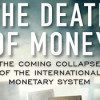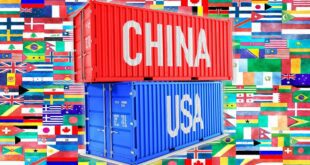Our monetary system is guaranteed to collapse. The central banks prints money like there is no tomorrow. The  governments spends like a drunken sailor and yet inflation is benign and interest rates sit at generational lows. Banks are gaining in profitability while their bad debts are being erased by rising asset prices. What’s not to like? Plenty! This article goes into the details of the money creation process to understand how and why this is happening, what the future implications will be and how to best invest to protect oneself from these eventualities. governments spends like a drunken sailor and yet inflation is benign and interest rates sit at generational lows. Banks are gaining in profitability while their bad debts are being erased by rising asset prices. What’s not to like? Plenty! This article goes into the details of the money creation process to understand how and why this is happening, what the future implications will be and how to best invest to protect oneself from these eventualities.
The above introductory comments are edited excerpts from an article* by Harry Richardson as posted on GoldSeek.com under the title The Road to Hyperinflation.
The following article is presented courtesy of Lorimer Wilson, editor of www.munKNEE.com (Your Key to Making Money!) and has been edited, abridged and/or reformatted (some sub-titles and bold/italics emphases) for the sake of clarity and brevity to ensure a fast and easy read. This paragraph must be included in any article re-posting to avoid copyright infringement.
Richardson goes on to say in further edited excerpts: Put simply, what we call money is usually created in a three step process.
In order to create money, central banks can also buy assets. In theory any productive asset would do, but in practice central banks usually buy their own governments bonds. The US Federal Reserve buys mainly US T-bonds; the Bank of England buys British Government “Gilts” and so on. This is partly for political reasons (paying off the Government for allowing them to print money) and partly for economic reasons. In financially stable countries, Government bonds represent the most secure financial assets on offer, backed as they are by the ability of the state to raise money through taxes. If the nation is doing ok, you can be sure the Government will be doing just fine. In normal times, these purchases of bonds are not direct purchases. That is to say, they occur in the secondary market. The bonds have been purchased initially from the Government by banks, institutions or even private individuals and are then resold in auctions.The central bank buys (or sells) bonds in these auctions to create or retire money. By doing this, the Central Bank is able to manipulate interest rates. Higher demand for bonds raises prices. Since each bond pays a fixed amount of interest, when its value goes up, the interest rate drops. For instance, if a bond pays $10 per year and its value is $100, then it pays 10% interest. If the price of this bond were to double to $200, since its interest payment remains at $10, it now pays just 5%. In order to raise interest rates, the central bank does the opposite. They simply sell bonds at auction and retire the cash which is raised, withdrawing it from circulation. With more bonds on offer, prices drop, and interest rates go up. Remember this, it is important. During the early stages of credit expansion,
The stated goal of most central banks is to find a rate which gives reasonable growth, without runaway inflation.This is the reality in which most central bankers have lived their lives. It is also the prism through which they see monetary policy. However this is a false reality which can only exist during the early stages of credit expansion. As time goes by the forces of deflation gather strength. This leads to:
We’re Headed for Crippling Deflation First & Then Rampant Inflation – Here’s Why At this point, the central bank has only two choices:
By borrowing and spending on an unprecedented scale, Western Governments have:
In earlier stages of the credit cycle, whipping boy behaviour of government was kept in check by the “bond vigilantes” – large private holders of government bonds who are inclined to sell them when they see governments running unsustainable deficits. These bond holders know that governments will not have the ability to repay these bonds with anything like sound money so their selling of bonds raises interest rates, forcing governments to rein in spending and repay debt. After a debt deflation event however, the world becomes a dramatically different place. With credit money disappearing down a deflationary black hole, money printing on an epic scale is required to keep money supply at a stable level.
So here we sit today. The central bank prints money like there is no tomorrow. The government spends like a drunken sailor and yet inflation is benign and interest rates sit at generational lows. Banks are gaining in profitability while their bad debts are being erased by rising asset prices. What’s not to like? Well, if you aren’t one of the lucky ones with real estate and a healthy share portfolio, things are not so good.
Clearly this is not a sustainable model. It can however continue for quite some time… Unfortunately, we do know that if something can’t go on, it will eventually stop. The sixty four million dollar question is when? (and how?). Nobody knows for sure of course, but I wanted to lay out my own prediction for a possible series of events which could bring the system down.
This is the result central banks have been looking for. They see it as a return to the good old days, pre-crisis and I am sure they are currently all patting each other on the back and heaving a huge sigh of relief. This sense of relief may well turn out to be somewhat premature however as a couple of niggling problems point to things not being quite what they seem.
Printing money will therefore need to be continued to keep the system going. Recent talk of “tapering” means that either:
Interest Rates NOT Rising Any Time Soon – Even With Fed Tapering. Here’s Why Whichever path is taken, more money printing is the final destination, but so what? Japan has been following this path for years with still no sign of rampant inflation. Many wise people think something will go wrong. Any number of possible flash points exist, but here is my own prediction for how it might happen: Japan has been at this game longer than anyone else, so it may well be the first to come undone. Recent policy by the Japanese government and central bank has been to aggressively target inflation of around 2%. This is hoped to stimulate the economy, weaken the yen and make exports more competitive. Presumably this has been done through bulk buying of Japanese Government Bonds (JGB’s) by the central bank. In April this year (2014) the Japanese Central Bank stopped buying JGB’s for one and a half days. During this period, not a single bond was sold. With yields near zero percent and inflation targeted at 1.8% this is hardly surprising. It does, however, give a hint of a very scary possibility in the near future. When central banks target an inflation figure, they often overshoot. Monetary policy is not an exact science and actions taken now are not felt for six months or more. Inflation in Japan has just reached 3%, well ahead of its target. Expectations would be for the Japanese Central Bank to begin tightening, but how? In normal times, the bank would begin selling its portfolio of government bonds. Since the central bank now owns the entire bond market, who is going to buy? No one at these prices apparently. To drop prices substantially to reach a market rate, however, would set off some potentially cataclysmic consequences.
There is another [better] way the central bank could reduce money in circulation. Having spent the last 20 years receiving capital injections from the Central Bank, the commercial banks are likely to want to lever up these central bank reserves by lending to speculators. In order to limit this, the central bank could:
In this way, a crisis in Japan could quickly morph into a crisis in the US treasury market leading to an explosion in QE. After all the talk of “tapering” this would have a very significant psychological impact on perceptions of the US Dollar and treasury strength. With other significant holders of US Government bonds in Asia and the Middle East selling, the Fed would be forced to buy (monetise) these bonds with freshly printed dollars, which would, by this stage, be depreciating rapidly.
People will still need money to be able to survive. Not only people, but businesses, governments and institutions will need some form of money to conduct essential business. If this situation became reality, only two currencies (gold and silver) would hold value, because these are the only currencies which can’t be printed by central banks.
Invest and insure your wealth accordingly.
Editor’s Note: The author’s views and conclusions in the above article are unaltered and no personal comments have been included to maintain the integrity of the original post. Furthermore, the views, conclusions and any recommendations offered in this article are not to be construed as an endorsement of such by the editor.
*http://news.goldseek.com/GoldSeek/1404482400.php (© GoldSeek.com, Gold Seek LLC) Related Articles: 1. Fed & Yellen So Far Behind Inflation Curve Chance of Hyperinflation Is Now 35%! Here’s Why Janet Yellen and the Federal Reserve are so behind the inflation curve, and many other market implication curves, that we probably are staring at a 35% chance of a Hyper-Inflationary period by the time the Federal Reserve realizes that “noise” is actually real inflation! Read More » 2. Fed Funds Cycle Suggests Positive Outlook for Gold – Here’s Why Below is some interesting research by Doug Peta of BCA Research regarding the Fed Funds Rate Cycle, and what that research – as well as our own in-house research – could mean for gold to help you understand the positivity we see for the precious metal looking towards 2015. Read More » 3. Weak Gold Price & Falling Interest Rates Say Current Monetary Policy Is Too Tight – Here’s Why A change in monetary, fiscal, and regulatory policy is necessary to beat back the forces of recession and deflation. If the messages of falling gold prices and falling interest rates are not enough to gain the attention of policy makers, I suspect that the specter of future falling stock prices throughout the world will be. That is what is in store for us if the recessionary/deflationary bias in the world economy that gold and bonds are signaling, reasserts itself. Read More » 4. Blame Deflationary Pressures On Current Prices Of Gold & Silver I believe that the inflation and price charts paint a clear picture, and that until inflation in the world picks up significantly, there will be no meaningful rallies in precious metals…[While] I am bullish on gold and silver long term, the short-term pressure is still evident and might take them lower in the next couple of months. Read More » 5. Probability of Deflation Is 60%, Inflation Is 25% and Muddling Through Is 15% – Here’s Why At the end of last year virtually every every single economist expected interest rates to rise this year as the Fed tapered their purchases and the economy improved but, in fact, interest rates on the 10 year U.S. Treasury have been going down year to date (from 3% to 2.5% after rising from about 1.6% to 3% last year). The masses, going along with this crowd, got fooled but we have been calling for a decline in interest rates for some time now due to world-wide deflation and it couldn’t be clearer to us that this is the most likely scenario for the United States. Let us explain. Read More » 6. Inflation: What You Need to Know The March year-over-year inflation rate was 1.51%, which is well below the 3.88% average since the end of the Second World War and 37% below its 10-year moving average. Read More » 7. 21 Countries Have Experienced Hyperinflation In the Last 25 Years Hyperinflation is not an unusual phenomenon. 32 countries have experienced hyperinflation over the last 100 years of which no less than 21 have experienced it in the past 25 years and 3 in the past 10 years. The United States is one of the few countries to have experienced two currency collapses during its history (1812-1814 and 1861-1865). Could it happen again? Words: 1450 Read More » 8. Interest Rates NOT Rising Any Time Soon – Even With Fed Tapering. Here’s Why Everyone and their mom is expecting long-term interest rates to rise now that the Fed is tapering its bond buying programs. I have a couple of problems with this line of thinking because, although it seems like reducing demand for a security (i.e. tapering QE) would result in a drop in price, when you really think about how quantitative easing works this makes no sense and, secondly, the market is telling us this makes no sense. Let me explain. Read More » 9. We’re Headed for Crippling Deflation First & Then Rampant Inflation – Here’s Why Are we headed for rampant inflation or crippling deflation? I believe that we will see both. The next major financial panic will cause a substantial deflationary wave first, and after that we will see unprecedented inflation as the central bankers and our politicians respond to the financial crisis. [Let me explain why I think that will unfold.] Words: 1025 Charts: 3 Read More » 10. U.S. Economy: Reduce Spending (Future Depression) OR Keep Spending (Future Hyperinflation) The U.S. government is in what is known as a “debt death spiral”. They must borrow money to repay prior debts. It is as if they are using their Visa Card to make an American Express payment. The rate of new debt additions dwarf any rate of growth the economy can possibly achieve. The end is certain, only its timing is unknown, and, once interest rates begin to rise, and they will, it’s game over. Read More » 11. 15 Questions & Answers Regarding Hyperinflation It is difficult to say exactly when hyperinflation will hit a currency. However, I am convinced that the danger level is so high for most fiat money that it is worthwhile for everyone to increase their understanding of hyperinflation. This is the first part of a Hyperinflation FAQ for frequently asked questions or objections about hyperinflation. Words: 1600 Read More » 12. Will Hyperinflation Happen in America? Here Are Economic & Political Worst Case Scenarios I have been reading a lot lately about the coming hyperinflation in America… [and while] I respect many of the writers [who express that opinion] I think they are jumping the gun. At this point none of the economic or political factors required to set off hyperinflation are present – and a careful analysis of theory, fact, and history leads me to conclude that inflation/stagflation is our future. It is quite a leap of fancy to say we are certain to have hyperinflation. Words: 2780 Read More » 13. These 6 Charts Illustrate That Hyperinflationary Pressure in America Is Growing The six charts I provide in this article illustrate why the hyperinflationary pressure in America is growing. This is not necessarily a forecast for hyperinflation – this is simply a demonstration that some of the precursors to a hyperinflationary cliff are building. (Words: 1001; Charts: 7) Read More » 14. The Future Price of Gold and the 2% Factor It is my contention that the price of gold rallies whenever the U.S. dollar’s real short-term interest rate is below 2%, falls whenever the real short rate is above 2%, and holds steady at the equilibrium rate of 2%. Let me explain. Read More » 15. U.S. Dollar Collapse Will Be Cataclysmic Endgame of Current Fiscal Policy Government fiscal policy – profligate spending, leading to debt crisis, leading to currency crisis, leading to…the fall of the U.S. dollar – is the major cataclysmic endgame that is going to befall the U.S. Read More » 16. Which of These 6 Actions Will U.S. Gov’t Take to Resolve Country’s Debt Problems? The U.S. is in a financial debt spiral. What’s the Administration to do? This article analyzes 6 alternative courses of action available, presents the consensus view of each, comes to a conclusion as to what will unfold and suggests what the implications are for one’s investment portfolio. Let’s take a look. Read More » 17. Economics Can’t Trump Mathematics & the Math Says US In a Debt Death Spiral The madmen who are responsible for the coming economic disaster continue to behave as if they can manage to avoid it. Violating Einstein’s definition of insanity, they continue to apply the same poison that caused the problem. These fools believe they can manage complexities they do not understand. We are bigger fools for providing them the authority to indulge their hubris and wreak such damage. Read More » Anyone that thinks that the U.S. economy can keep going along like this is absolutely crazy. We are in the terminal phase of an unprecedented debt spiral which has allowed us to live far, far beyond our means for the last several decades. Unfortunately, all debt spirals eventually end, and they usually do so in a very disorderly manner. Read More » 19. The Currency War: Which Country Will End Up With the Fastest Currency in the Race to the Bottom? We believe that we are in the “competitive devaluation” stage presently [see graph below] as country after country is printing money in order to lower rates and doing whatever possible to devalue their currency – to have the fastest currency in the…race to the bottom – in order to export their goods and services. [The next stage will be protectionism and tariffs. This article gives an update on the race to debase.] Read More » 20. Gold Has a Clear Advantage in Developing Global Currency War – Here’s Why There is an increasingly disorderly currency war going on out there, and the advantage of gold is clear– they can’t print it, they can’t default on it, and there will always be demand for it. Simply put, in the global currency wars, owning gold is like abandoning the battlefield altogether. Words: 270; Charts; 2 Read More » |
 munKNEE.com Your Key to Making Money
munKNEE.com Your Key to Making Money



Fantastic web site. Plenty of useful information here.
I’m sending it to some friends ans additionally sharing in delicious.
And of course, thank you to your effort!
Appreciating the hard work you put into your site and detailed information you present.
It’s good to come across a blog every once in a while that isn’t the same unwanted rehashed
material. Fantastic read! I’ve saved your site and I’m including your RSS feeds to my Google account.
Hello There. I found your blog using msn. This is an extremely well written article.
I’ll make sure to bookmark it and come back to read more of your useful info.
Thanks for the post. I will certainly return.